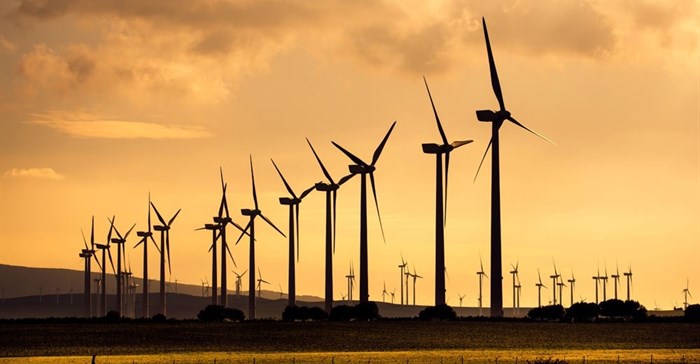
Top stories


LegalCape Town estate agent dupes seller in elaborate property scam, court intervenes
Anelisa Zungu and Renel Fourie 14 hours




More news




The tidal power underwater turbines that were completed last month are only the latest green energy project for an archipelago that has been reliant for decades on the North Sea offshore industry.
Even homeowners are getting in on the act with small wind turbines in their gardens and solar panels on their roofs - somewhat optimistically in an area where winter daylight lasts just six hours.
"We're not 100% self sufficient but we're quite a long way towards it," Jim Dickson, 69, told AFP at his home in the windswept village of Brae, referring to electricity generation for his own house.
Dickson, who lives near the Sullom Voe oil terminal, can power the building and an electric powered Nissan Leaf car from a turbine in his garden with enough left over to feed into the island's grid when conditions are favourable.
"What I make from the government for producing per kilowatt hour more than pays for what I buy from the grid, so effectively there is no power bill."
The former harbour master knows about the dangers of fossil fuels.
He was winched aboard the out of control oil tanker MV Braer in 1993 during the worst cyclone on record in the North Atlantic, in an ill-fated attempt to prevent it running aground.
His efforts to attach a tow rope failed and the ship crashed into the rocks at Quendale Bay, spilling 84,700 tonnes of crude oil into the sea.
The nation was aghast at images of Shetland's famous seabirds drowning in black ooze.
The oil industry in Shetland began in the 1970s with the development of the North Sea fields.
The Brent field east of the archipelago became an emblem of the industry, with "Brent Crude" becoming a benchmark for oil trading around the world.
Oil giant Shell has announced plans to decommission the field but new discoveries west of Shetland could give a boost to the industry.
French energy firm Total has invested £3.5bn (€4.1 bn, $4.4bn) in a new gas plant near Sullom Voe that opened last year to extract gas from its fields west of Shetland, Laggan and Tormore.
"Producing gas and oil from the west of Shetland basin is very, very challenging," field operations manager Simon Hare told AFP on a hill overlooking the plant, a sprawling development which stands in sharp contrast to the rest of the islands' natural beauty.
The gas plant is designed for a lifetime of 30 years.
But environmentalists are pinning their hopes on another energy asset under the waters around Shetland.
"In tidal, we're very fortunate in Scotland," said Patrick Ross-Smith, Shetland development officer at Nova Innovation, which has installed three 100KW turbines in the Bluemull Sound.
Scotland has 24%of Europe's entire marine energy potential because of its powerful tides.
"It's great to harness some of that in Shetland," he said.
The turbines' success has had the odd effect of creating too much power.
"The Shetland grid is itself constrained now. It cannot take any more renewables," he said.
Around 10% of the islands' electricity is generated from renewables and wind and tidal generators are only licenced to produce up to that limit.
There is no connecting cable between Shetland and mainland Britain and as the renewable energy cannot easily be stored to ensure stable supply, the turbines have to be switched off from time to time.
The proposal for a connector line to link Shetland to the mainland 322km away remains uncertain.
For Dickson, the more renewables the better.
"You will always need hydrocarbons to power your jumbo jet, for example, but you shouldn't be making electricity with hydrocarbons," he said. "It's wrong, it's nonsense".
Source: AFP

For more than two decades, I-Net Bridge has been one of South Africa’s preferred electronic providers of innovative solutions, data of the highest calibre, reliable platforms and excellent supporting systems. Our products include workstations, web applications and data feeds packaged with in-depth news and powerful analytical tools empowering clients to make meaningful decisions.
We pride ourselves on our wide variety of in-house skills, encompassing multiple platforms and applications. These skills enable us to not only function as a first class facility, but also design, implement and support all our client needs at a level that confirms I-Net Bridge a leader in its field.
Go to: http://www.inet.co.za